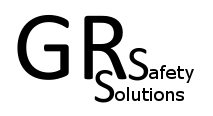Information
-
Document No.
-
Audit Title
-
Client / Site
-
Conducted on
-
Prepared by
-
Location
-
Personnel
A. Safety Statement
-
Under Section 20 of the Safety, Health and Welfare at Work Act 2005 all employers have a specific duty to prepare a Safety Statement. This is, in effect, management’s programme in writing, which details how safety, health and welfare is being managed and secured.
Once completed the relevant contents of the Safety Statement must be brought to the attention of the employees, in a form, manner and language that is likely to be understood by them. -
1. Is there a current Safety Statement available on site?
-
2. Is the Safety Statement fit for purpose?
-
3. Have all recent updates been inserted into the Safety Statement?
-
4. Have the site Risk Assessments (RAs) been inserted into the Safety Statement or the RAs are available in a separate folder which is kept with the Safety Statement?
-
5. Have all the relevant sections of the Safety Statement been completed?
-
6. How is the Safety Statement brought to the attention of the Employees?
-
7. How is the Safety Statement brought to the attention of other people on site who may be exposed to risks? (e.g. visitors, contractors).
B. Health & Safety Committee
-
The local Safety Committee must meet at least twice per year with the minutes recorded and retained on file. The main responsibilities of the Committee are
- Develop and promote safe working practices.
- Recommend improvements in systems of work.
- Review accidents/incidents and implement measures to prevent reoccurrence.
- Keep employees informed of new developments in health and safety matters.
- Arrange for risk assessments to be undertaken and agree reasonable control measures and ensure they are implemented.
- Review the management of site health and safety. -
1. Is there a working Health & Safety Committee on site?
-
2. Is the site`s most senior manager on the committee?
-
3. Are at least two meetings held per year?
-
4. Is there an adequate management : employee representation on the committee?
-
5. Are the meetings conducted to a pre-arranged agenda?
-
6. Are there minutes with action points recorded for each meeting?
C. General Risk Assessments (GRAs).
-
Section 19 of the Safety, Health and Welfare at Work Act 2005 requires that employers and those who control workplaces to any extent must identify the hazards in the workplaces under their control and assess the risks to safety and health at work presented by these hazards.
-
1. Have GRAs been carried out for the site?
-
2. Are the GRAs suitable and sufficient?
-
3. Have control measures been implemented?
-
4. Have GRAs been conducted or reviewed within the last six months?
-
5. Have the GRAs been signed off by the General Manager?
-
Additional Information:
D. Fire Risk Assessment (FRA) & Fire Precautions.
-
Under existing legislation, employers are obliged to ensure that they assess the risks posed to employees and to also have in place adequate means of escape, fire detection and fire fighting. The means of evaluating this information is known as a "fire risk assessment".
-
1. Has a FRA been carried out ?
-
2. Is the FRA suitable and sufficient?
-
3. Have all recommended control measures been carried out?
-
4. Has the FRA been signed off by the General Manager?
-
5. Has the FRA been conducted or reviewed within the past 12 months?
-
6. Are Emergency Evacuation procedures in place?
-
7. Are emergency evacuation drills carried out and recorded?
-
8. Is the fire alarm system annually maintained by a competent prson?
-
9. Is there adequate provision of fire fighting equipment?
-
10. Has the fire fighting equipment been serviced and inspected within the previous twelve months?
-
Date the equipment was last serviced:
-
11. Are all fire doors closed and unobstructed?
-
12. Are all fire evacuation routes kept clear and well maintaind?
-
13. Are all fire signs adequate and clear?
-
14. Have fire marshals been appointed and trained?
-
15. If there is emergency lighting installed onsite, is it maintained on a regular basis?
-
16. Is the emergency lighting tested on a regular basis?
-
17. Is there a marked `Assembly Point` located in a safe area?
E. Manual Handling Risk Assessment (MHRA) & Provisions.
-
Under the Safety, Health and Welfare at Work (General Application) Regulations 2007 –Manual Handling of Loads a manual handling risk assessment must be carried out by a competent person in consultation with employees and must identify the specific aspects or part of the operation that could increase the risk of an injury to employees.
-
1. Have MHRAs been carried out using the T.I.L.E. format?
-
2. Are the MHRAs suitable and sufficient?
-
3. Have controls been implemented?
-
4. Have the MHRAs been reviewed within the last six months?
-
5. Have the MHRAs been signed off by the General Manager?
-
6. Is there equipment available to minimise manual handling?
-
7. Does the Workplace layout and organisation minimise manual handling?
-
8. Is the manual handling training for the site complete and current?
-
Additional Information:
F. Display Screen Equipment (DSE)
-
Health and Welfare at Work (General Application) Regulations 2007 Chapter 5, Part 2 – Display Screen Equipment habitual users are entitled to have their workstation risk assessed to evaluate possible risks which may give rise to visual or physical difficulties or to mental stress.
The analysis / assessment must be undertaken by a competent person with the necessary skills, training and experience must complete this analysis. Following the assessment appropriate steps must be taken to control any identified risks.
The results of the workstation assessment must be communicated with the employee and a written record maintained. Any changes to be made to the workstation must be recorded. -
1. Have DSE assessments been carried out for each DSE user?
-
2. Have the DSE assessments been followed up and the necessary controls put in place?
-
3. Have the assessments been signed off by the General Manager?
-
4. Are DSE assessments reviewed on a regular basis?
-
5. Are employees who are habitual VDU users made aware of their right to free eye tests and the basic cost of corrective appliances (e.g. Glasses, lens)?
-
Additional Information:
G. Hazardous Substances - Chemicals.
-
Employers are required by regulations to protect workers from the hazards related to chemical agents at work. The regulations set out the measures employers must take and deal with risk assessment, prevention and control measures, health surveillance, record keeping and employee’s duties. The regulations apply in situations where hazardous chemical agents are present or likely to be present in the workplace.
-
1. Are hazardous substances used on site? e.g. corrosive, flammable etc.
-
2. If hazardous substances are present, are data sheets held for the substances?
-
3. Has a risk assessment been carried out?
-
4. Is there an appropriate secure locker or cupboard for storage of the hazardous substances?
-
5. Are the appropriate signs and labels in use?
-
Additional Information:
H. Lift Truck Operation.
-
Specific requirements are contained in the Safety, Health and Welfare at Work (General Application) 2007 Regulations, Chapter 2, 42-61which deal with the use of work equipment used for for lifting.
-
1. Are lift truck operators trained for each class of class of truck? e.g. powered pallet truck, counterbalance, reach truck.
-
2. Have all operators received refresher training for each class of lift truck within the past three years or after an incident caused by careless truck operation?
-
3. Are there adequate procedures in place to prevent unauthorised use of unattended lift trucks? e.g. keypads, key control policy.
-
4. Are there adequate warning signs/beacons/lighting on each lift truck?
-
5. Is there a list of authorised operators posted?
-
6. Does each lift truck undergo a daily operator inspection? These inspections should be recorded e.g. forktag system.
-
7. Does each lift truck undergo preventative maintenance at least twice twice per year? This work must be carried out by a competent person.
-
8. Has each lift truck undergone an annual `thorough examination` and a written report produced? This examination must be carried out by a competent person.
-
9. Is there a battery `top up` area in a well ventilated area with an eye wash station, goggles, rubber gloves and apron?
-
10. Does battery charging take place in a safe well ventilated area?
-
11. Is there safe operation of lift trucks on site?
-
Additional Information:
I. Work Equipment.
-
There is a duty to ensure work equipment is suitable for use or properly adapted for the work to be carried out, so that it may be used without risk to employees health and safety. S
http://www.hsa.ie -
1. Is the work equipment in good condition and safe working order?
-
2. Is the equipment appropriate for its use?
-
3. Have operators been properly instructed in the safe use of the equipment and given information to use it safely?
-
4. Does the equipment have adequate controls, guarding, warning devices, interlocks and emergency stop controls?
-
5. is the equipment regularly maintained and records kept?
J. Work at Height.
-
1. Is there adequate guarding on stairs, mezzanine, platforms etc?
-
2. Are there any obvious trip hazards?
-
3. Has the risk of falling objects been eliminated?
-
4. If there is height access equipment on site, is the equipment fit for purpose?
-
5. Are there safe and appropriate practices for gaining access for height?
-
6. Is the access equipment inspected and serviced every six months?
K. First Aid.
-
1. Does the site have suitable and sufficient first aid equipment? e.g. first aid kits.
-
2. Is the equipment easily accessible and it`s location correctly signd?
-
3. Is all first aid stock within the sterility expiry date shown on the packaging?
-
4. Is first aid training training complete and current?
L. Incident Reporting.
-
1. Have all injury and near miss incidents been reported using the appropriate reporting procedures?
-
2. Has a copy of all incident reports been forwarded to the Group Health and Safety Manager?
-
3. Is there an adequate level of incident investigation?
M. Contractors.
-
1. Does the site have an approved list of contractors?
-
2. Has each contractor signed and accepted the site rules for contractors?
-
3. Has each contractor provided health and safety documentation?
-
4. Has each contractor provided liability insurance certificates?
-
5. Has the contractor list been reviewed in the last 12 months?
N. Storage.
-
1. Is the racking free from obvious damage?
-
2. Are Safe Working Load notices displayed on or beside each section of racking?
-
3. Has an annual racking inspection taken place?
-
4. Are all pallets stored in racking, in a sound and safe condition?
O. Electricity.
-
1. Are all electrical installations and constructed to prevent risk of death or personal injury or danger to health from electric shock, burn, explosion, arching, fire by the use of electricity or the mechanical movement of electrically equpmnt?
-
2. Is all the site`s electrical work carried out by a qualified, competent person (RECI or ECSSA)?
P. Personal Protective Equipment (PPE).
-
1. Has PPE been given to employees / contractors where necessary?
Sign off
-
Safety Coordinator 1
-
Safety Coordinator 2
-
General Manager
Risk Assessment
-
how, when and where?










